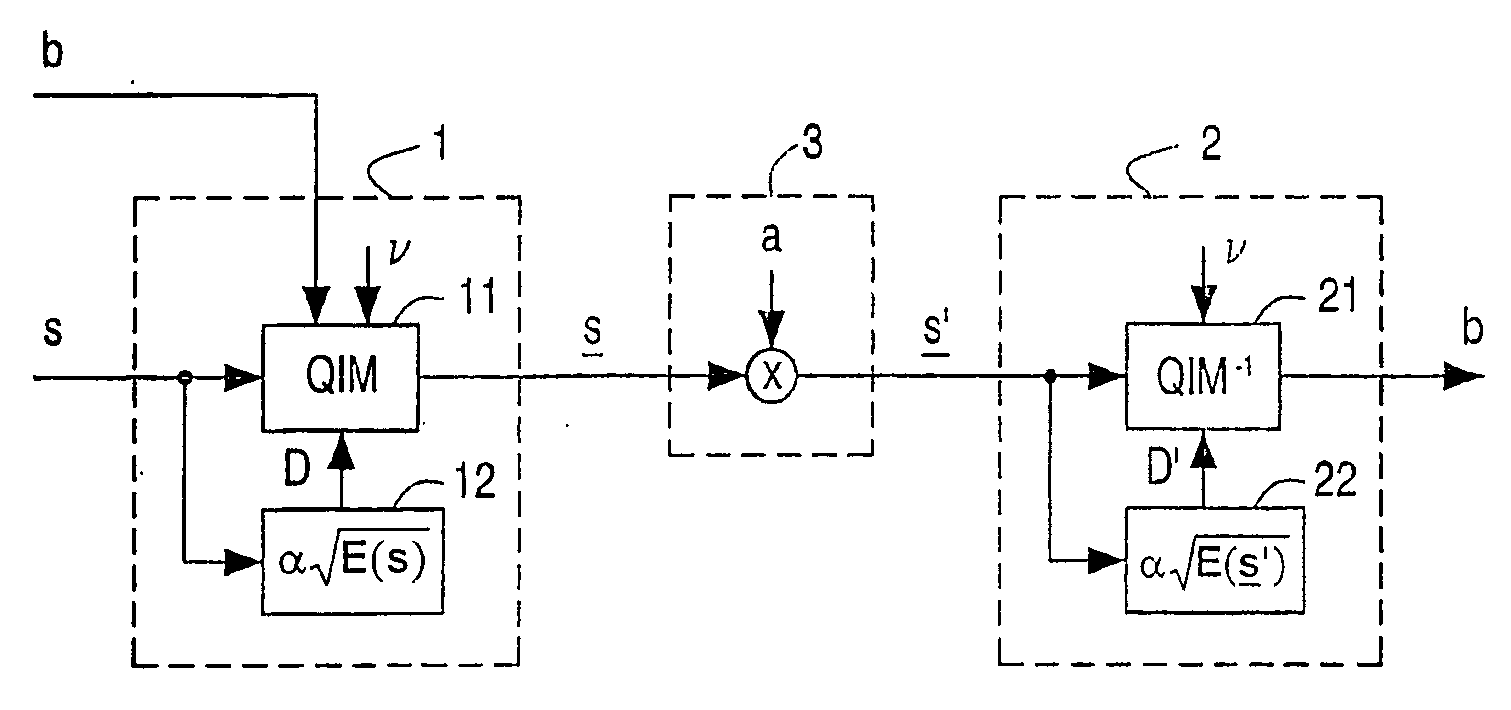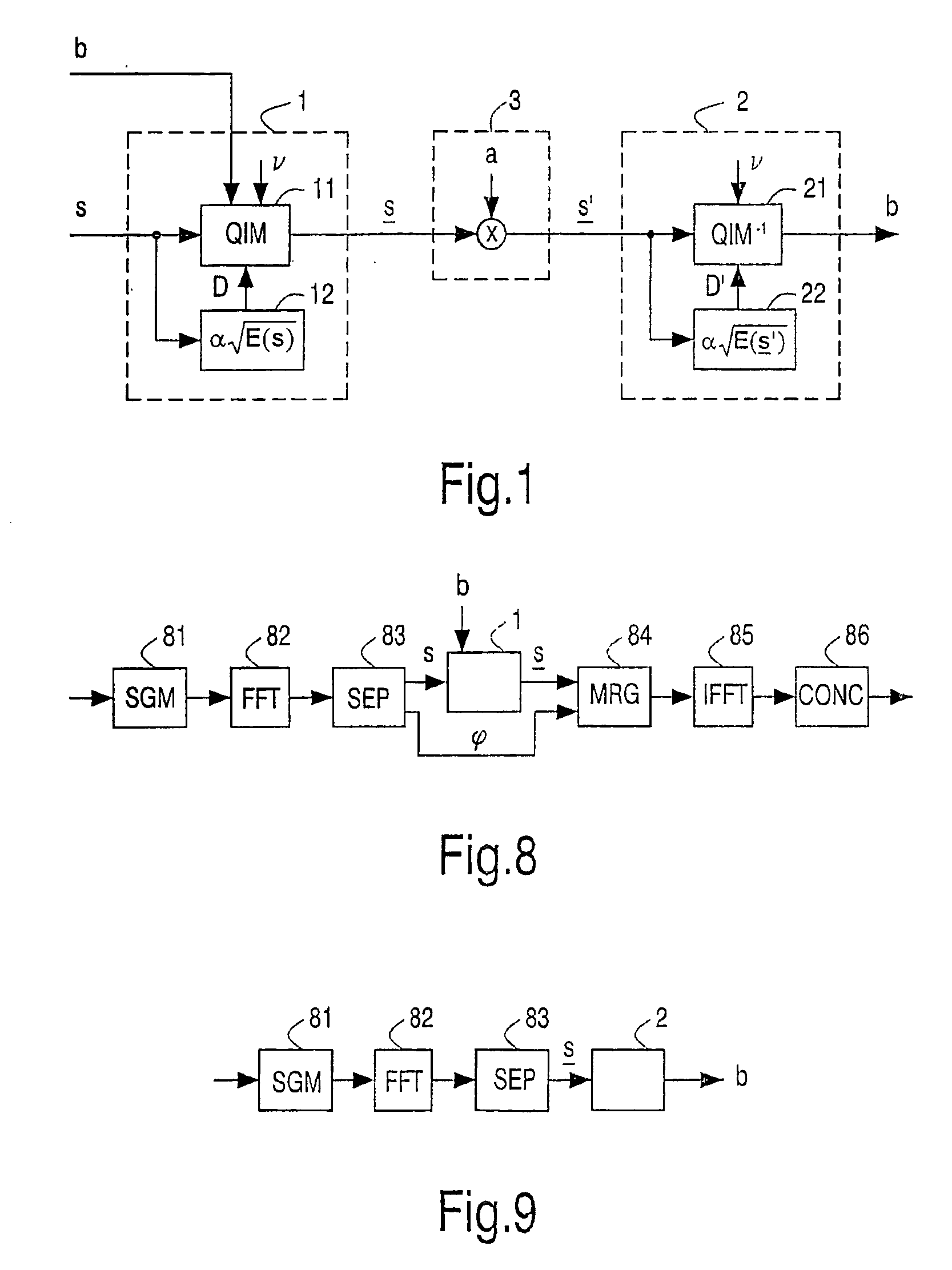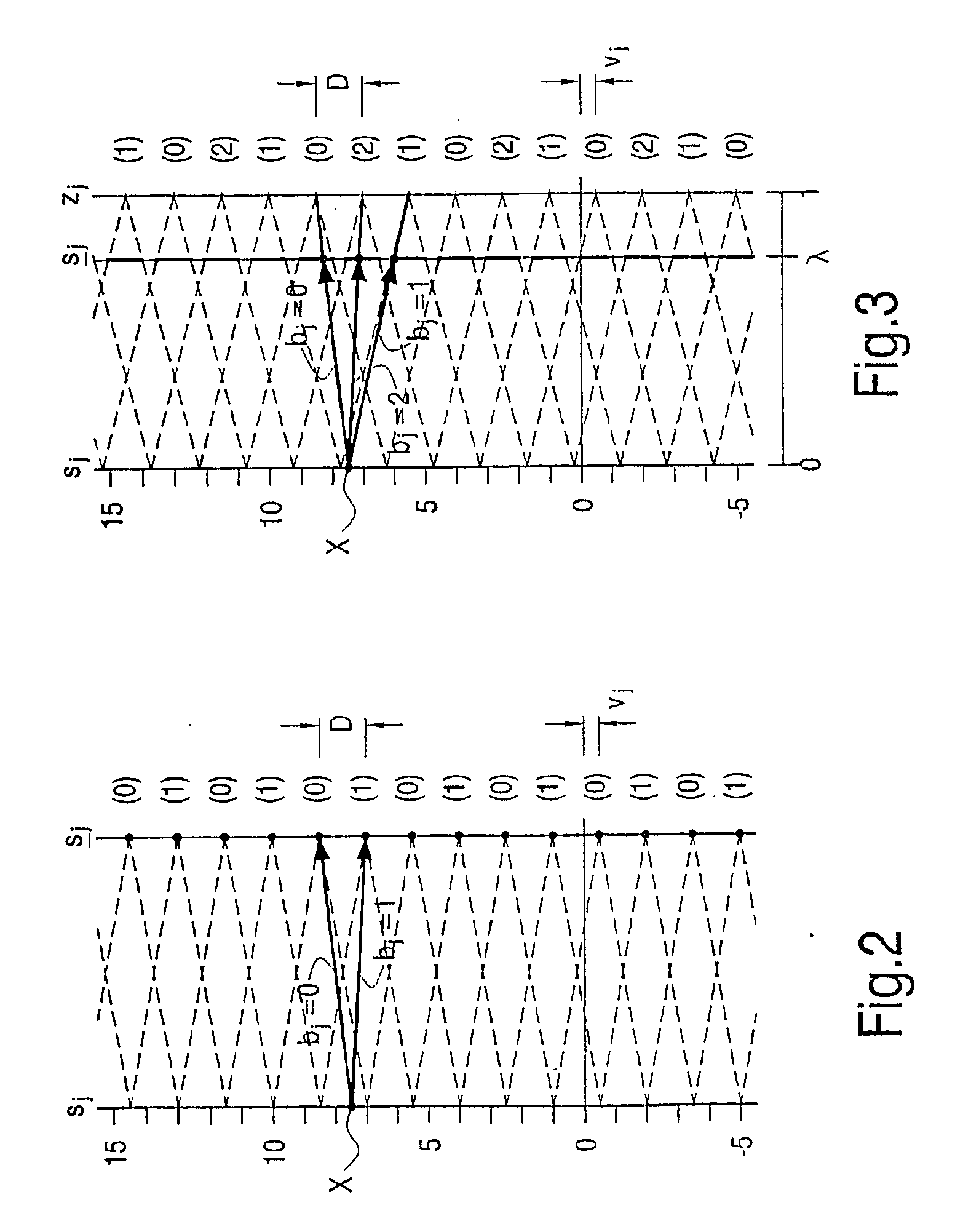Quantization index modulation (qim) digital watermarking of multimedia signals
a digital watermarking and quantitative index technology, applied in the field of quantitative index modulation (qim) digital watermarking of multimedia signals, can solve the problems of parameter needs, noise addition, and theoretically less than optimal watermarking methods
- Summary
- Abstract
- Description
- Claims
- Application Information
AI Technical Summary
Benefits of technology
Problems solved by technology
Method used
Image
Examples
Embodiment Construction
[0015] FIG. 1 shows a general schematic diagram of a system comprising a watermark embedder (or encoder) 1 and a detector (or decoder) 2 according to the invention. The watermark encoder embeds a watermark message b in a host signal s such that the distortion between the host signal s and the watermarked signal s is negligible. The decoder 2 must be able to detect the watermark message from the received signal s. FIG. 1 shoves a "blind" watermarking scheme. This means that the host signal s is not available to the decoder 2.
[0016] In practice, the watermarked signal has undergone signal processing, passed through a communication channel, and / or has been subject of an attack. This is shown in FIG. 1 as a channel 3 between embedder 1 and detector 2. The channel scales the amplitude of the watermarked signal s with a factor a (usually a<1). The channel may also add noise, and / or introduce an additional offset (not shown).
[0017] The watermark encoder 1 and decoder 2 involve a "codebook"...
PUM
| Property | Measurement | Unit |
|---|---|---|
| energy | aaaaa | aaaaa |
| spectral frequency | aaaaa | aaaaa |
| frequency | aaaaa | aaaaa |
Abstract
Description
Claims
Application Information
 Login to View More
Login to View More - R&D
- Intellectual Property
- Life Sciences
- Materials
- Tech Scout
- Unparalleled Data Quality
- Higher Quality Content
- 60% Fewer Hallucinations
Browse by: Latest US Patents, China's latest patents, Technical Efficacy Thesaurus, Application Domain, Technology Topic, Popular Technical Reports.
© 2025 PatSnap. All rights reserved.Legal|Privacy policy|Modern Slavery Act Transparency Statement|Sitemap|About US| Contact US: help@patsnap.com



